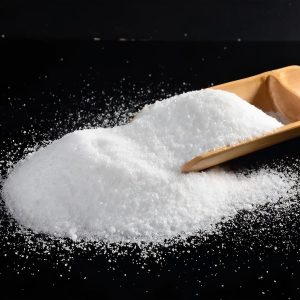The food industry constantly evolves to meet the growing demand for safe, natural, and functional ingredients. Among the versatile compounds that have gained popularity, Glucono Delta Lactone (GDL) stands out as a natural acidulant and coagulant with wide-ranging applications. GDL is valued for its ability to enhance food texture, flavor, and stability, making it indispensable in many processed foods.

What is Glucono Delta Lactone (GDL)?
A naturally occurring substance made from glucose is called glucono delta lactone. It belongs to the family of lactones and is produced through the fermentation of glucose by microorganisms such as Aspergillus niger. The food sector frequently uses GDL because of its mild acidulant and coagulant properties. It hydrolyzes in water to produce gluconic acid, which provides slow, controlled acidification.
Chemical Properties of GDL
| Property | Description |
| Chemical Formula | C6_66H10_1010O6_66 |
| Molecular Weight | 178.14 g/mol |
| Appearance | White crystalline powder |
| Solubility | Soluble in water |
| pH (1% solution) | 3.5–4.0 |
| Decomposition | Converts to gluconic acid in water |
Roles of GDL in the Food Industry
Acidulant
As an acidulant, GDL provides a controlled release of acidity, improving flavor and preservation. Unlike sharp acidulants like citric acid, GDL releases acid gradually, ensuring a smoother taste profile.
Applications:
- Salad dressings and marinades.
- Beverages for balanced tartness.
- Confectionery to enhance flavor stability.
Coagulant
In the manufacturing of foods like tofu, cheese, and yogurt, GDL is frequently employed as a coagulant. Its ability to lower the pH steadily allows for a controlled coagulation process, ensuring uniform texture and structure.
Applications:
- Tofu is made to have soft, smooth curds.
- Goods made from dairy, such as ricotta and cream cheese.
- Plant-based milk products for vegan options.
pH Regulator
In processed foods, GDL regulates the pH to improve shelf life, inhibit microbial growth, and ensure product stability.
Applications:
- Baking powders for leavening.
- Sausages and cured meats for preservation.
- Shelf-stable beverages.
Chelating Agent
GDL’s ability to chelate metal ions enhances its use in preventing oxidative rancidity and discoloration in food products.
Applications:
- Canned vegetables and fruits.
- Packaged meat products.
- Oil-based dressings to prevent oxidation.
Benefits of Using GDL in Food
Natural Origin
Derived from glucose through fermentation, GDL is a natural additive suitable for clean-label products.
Mild Acidification
Provides a smooth and controlled acidification process, ensuring uniform flavor profiles.
Versatility
Functions as an acidulant, coagulant, and chelating agent in various applications.
Enhanced Texture and Quality
Improves the texture of tofu, dairy products, and baked goods.
Safe and Recognized
Classified as Generally Recognized As Safe (GRAS) by the FDA, ensuring consumer safety.
Applications of GDL in the Food Industry
Tofu Production
GDL plays a critical role in tofu manufacturing. It acts as a coagulant, ensuring a consistent texture and flavor. Compared to traditional coagulants like magnesium chloride, GDL produces softer and silkier tofu.
| Coagulant | Texture | Application |
| Magnesium Chloride | Firm | Traditional tofu |
| GDL | Smooth, soft | Silken and dessert tofu |
Dairy Products
In dairy, GDL is used for controlled acidification in cream cheese, yogurt, and ricotta production. It ensures smooth textures and enhances flavor.
Baking and Leavening
GDL serves as an acid component in baking powders, helping release carbon dioxide during baking for optimal leavening.
| Baking Powder Type | Acid Component | Result |
| Traditional | Cream of tartar | Quick reaction, sharp taste |
| GDL-Based | GDL | Gradual reaction, smooth taste |
Meat Processing
In sausages and cured meats, GDL aids in lowering the pH to enhance preservation and texture, ensuring a longer shelf life.
Plant-Based Foods
As plant-based diets grow in popularity, GDL is increasingly used in vegan products like plant-based cheeses and yogurts to mimic the texture and taste of dairy.
Advantages of GDL Over Other Additives
| Property | GDL | Alternative Additives |
| Acid Release | Gradual | Rapid (e.g., citric acid) |
| Texture Impact | Enhances softness | May cause uneven textures |
| Natural Origin | Derived from glucose | Some synthetic or non-natural origins |
| Clean-Label Friendly | Yes | Not always |
Global Market Trends
The demand for GDL is driven by the increasing preference for clean-label and plant-based foods. The following chart highlights the growth in GDL usage across major industries:
| Industry | 2015 Usage (%) | 2025 Projected Usage (%) |
| Food & Beverage | 40% | 55% |
| Pharmaceuticals | 25% | 20% |
| Cosmetics | 20% | 15% |
| Others | 15% | 10% |
Safety and Regulatory Status
GDL is classified as GRAS (Generally Recognized As Safe) by the FDA and is approved for use in food products in the EU, Japan, and other global markets. Manufacturers prefer it because of its natural nature and lack of negative consequences.
Challenges and Limitations
Cost
GDL may be more expensive than traditional acidulants like citric acid.
Hydrolysis Sensitivity
The rate of hydrolysis of gluconic acid depends on temperature and pH, requiring precise control in processing.
Limited Awareness
Despite its benefits, GDL is not as widely recognized as some synthetic additives.
Conclusion
A natural and adaptable ingredient, glucono delta lactone (GDL) has shown promise in the food sector as a coagulant and acidulant. It is essential for creating food products of superior quality because of its capacity to improve flavor, texture, and stability.
With the growing demand for clean-label and plant-based foods, GDL is poised to become an even more integral component of modern food processing. Manufacturers can use GDL to satisfy changing customer demands and industry requirements by being aware of its characteristics and uses.

